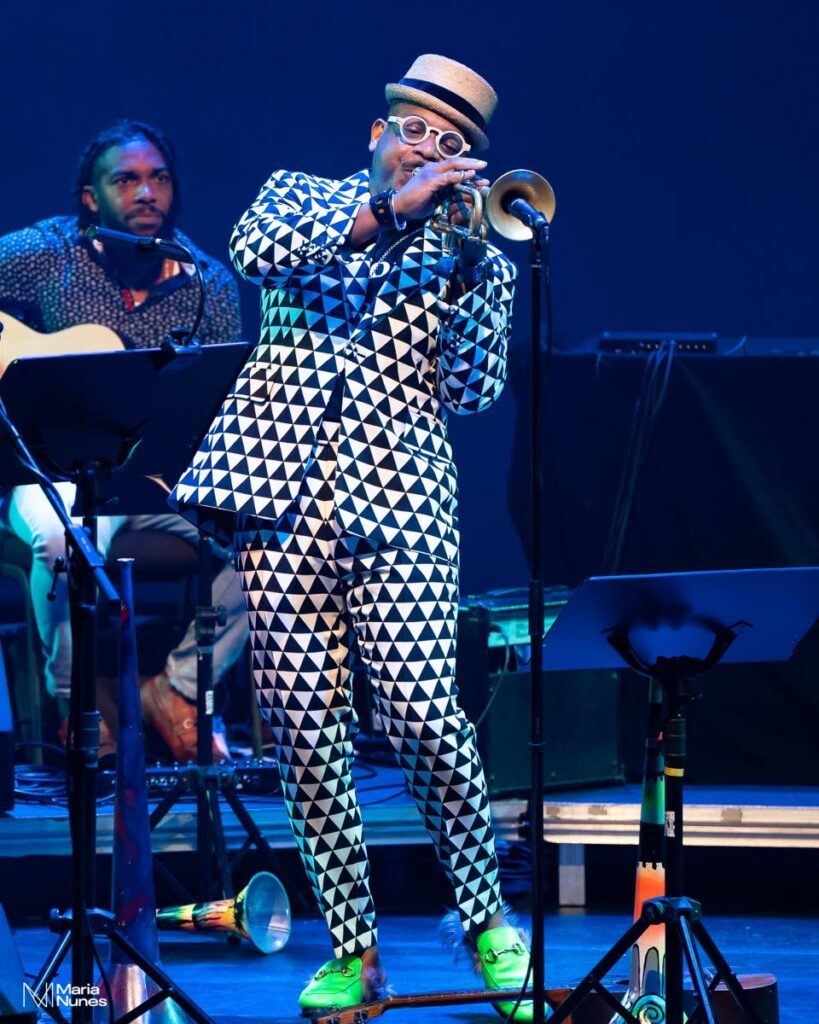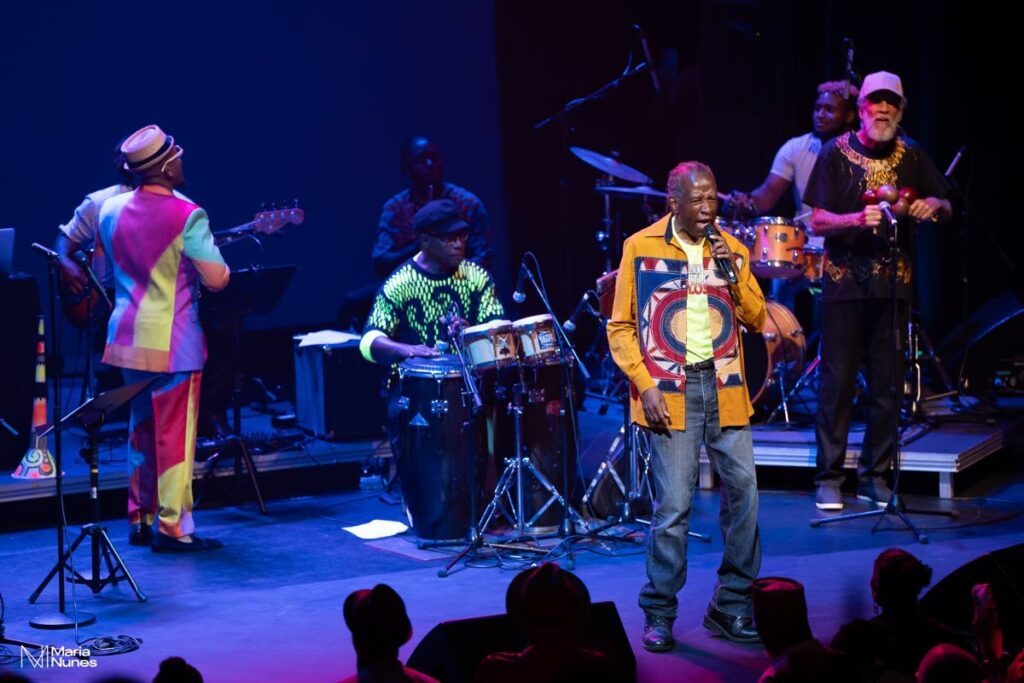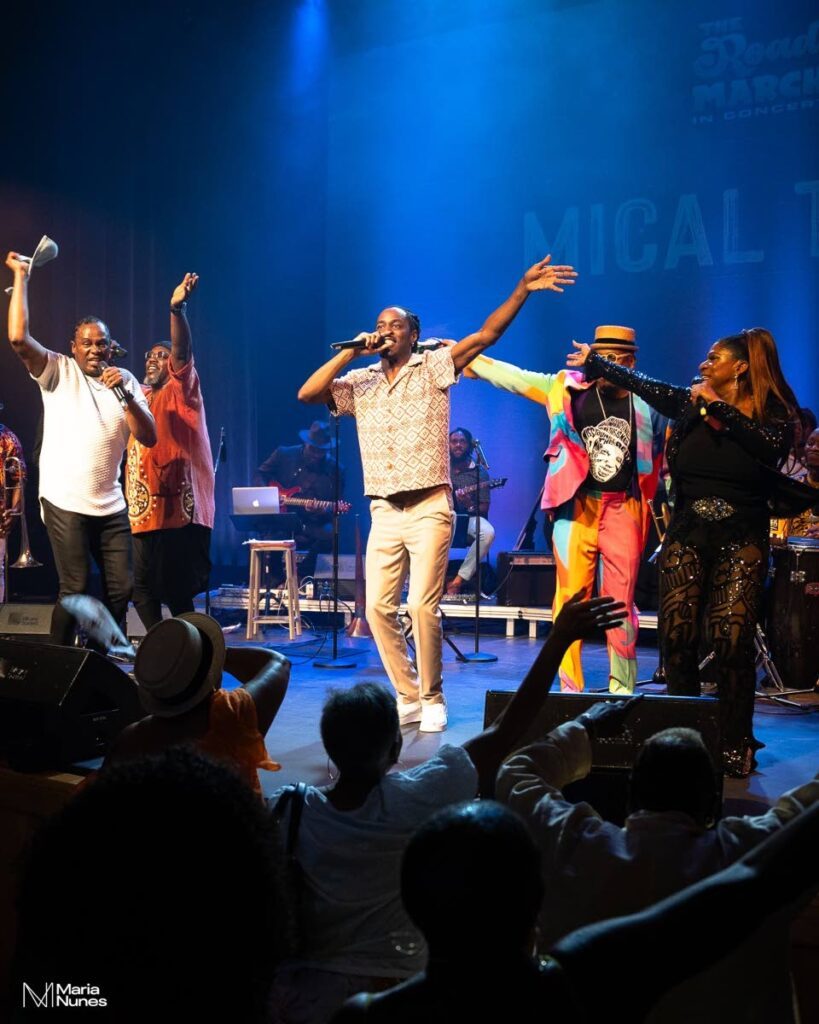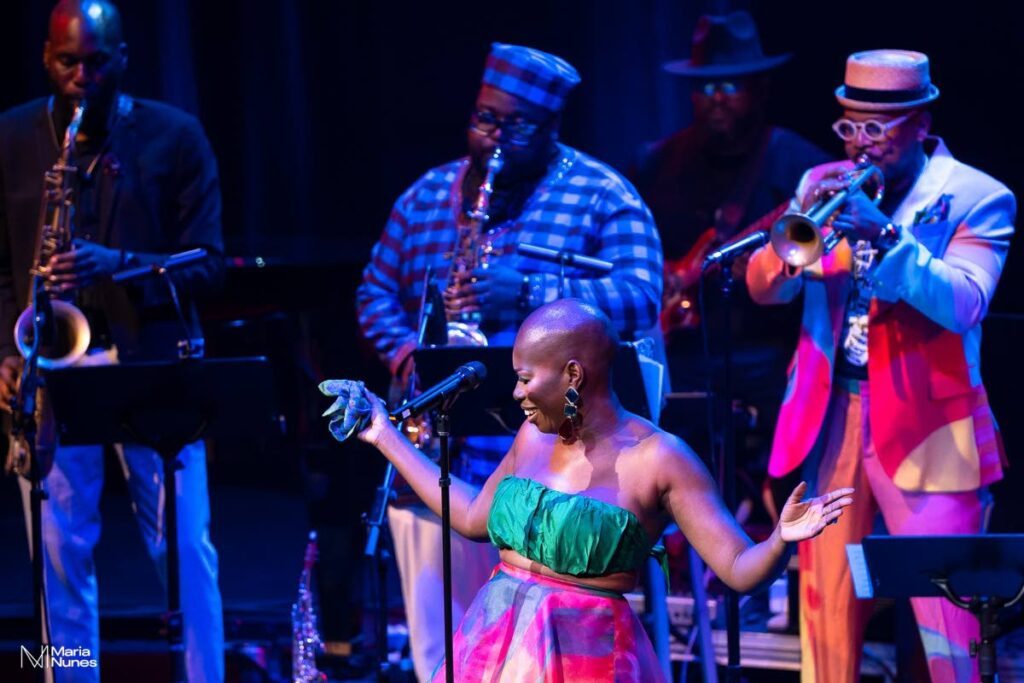Etienne Charles celebrates road march history in concert

NIGEL CAMPBELL
Etienne Charles’s engagement with the Carnival and its music is ongoing, as heard in his albums Kaiso (2011) and Carnival: The Sound of a People, Vol 1 (2017) and the subsequent live performances here. It's also visible in the evolution of Carnival music on the road with his music/masquerade band Riddim, Brass & Mas; his recording of kaiso and soca collaborations with Kes, Terri Lyons and David Rudder.
On February 1, at Queen’s Hall, St Ann's, he delved deeper into the magic of this music that moves a society and defines celebration.
The Road March in Concert was a review of those songs that are the most popular songs on the road, at Carnival competition spaces, and in fetes.
The concert began as a historical showcase of the chants, lavways and leggos of emancipated folk, and almost sequentially moved towards a veneration of popular calypsoes and soca tunes, highlighting the personalities who made these Carnival music hits.
It was a timeline; what began as a contemplation of music history ended in celebration and the cheeky marketing of Charles’s 2024 Carnival band, Magnificent.
And that was a good thing, as it targeted the two aspects of an audience in search of Carnival entertainment outside the sweaty jam of modern fetes. That juxtaposition of contemplation and celebration is at the heart of Carnival, and was the ultimate ethos of the event.

Starting the concert with a drum-accompanied chant of “Pas de six ans. Point de six ans!” (“Not six years. No more six years!”) – the refrain of the crowd gathered to hear the conditional emancipation proclamation by the governor in Port of Spain on August 1, 1834 – Charles invited the audience to interpret this as the first road march, the protest song of the people, possibly sung by prison turnkey Congo Barra.
From this noble genesis, the audience was then led through a few patois songs that represented the zeitgeist of an era before organised competitions with rules and government subvention: the 1899 chantwell lavway Prisonié Lévéz itself being a version of an 1830s kaiso; Jamette Matador’s (Sophie Mataloney’s) reworking of a Guadeloupean folk song as Pauline from 1906; Lionel Belasco appropriation of a Martiniquan melody L’Année Passée in 1907 later to become Lord Melody’s Rum & Coca Cola tune; and Wilmoth Houdini’s Sly Mongoose from 1923.
The use of the genius of jazz to reconsider history and legacy as art is a trope of Charles in his recording and performing career from the beginning. From local folklore characters to historical incidents in the Black Atlantic like the 1921 Tulsa race massacre, and to the Carnival as a whole and its development in the society, the blending of local rhythms and jazz harmonies to add context and contrast to ideas continues.

From this point on in the show, Charles grouped the songs by the artists, and in one important case, the arranger Pelham Goddard –the “architect” of 13 road marches from Charlie's Roots frontline singers Tambu Herbert and David Rudder to Calypso Rose and SuperBlue.
Cuatro and clarinet, cajon and marac, and the creole piano of Cuban pianist Axel Tosca and the chantuelle horn of Charles laid the foundation for a journey through the Golden Age pre-Independence road marches of Roaring Lion (Mary Anne, 1945), Lord Kitchener (Jump in the Line, 1946), and Mighty Sparrow (Jean and Dinah, 1956). The 1955 outlier, The Happy Wanderer (
valderi-valdera) by the Obernkirchen Children’s Choir, is still fairly well known, creating an interactive audience participation.
The songs of Kitchener were sung by his son Kernal Roberts, just as Soca Baptist by SuperBlue, the then Blue Boy, was sung by his daughter Terri Lyons, giving credence to the idea that soca genes are a thing – look at the Lord Shorty clan.
Capping the first half of the concert were ethnic jazz fusion reinterpretations of Patrice Roberts’ Band of the Year, and Bunji Garlin’s Hard Fete that incorporated Haitian rara rhythms, including the playing of konets (metal horns similar to the plastic vuvuzelas that dominated the 2010 FIFA World Cup in South Africa) by Charles and saxophonist Godwin Louis of Haiti.

Critical Sun was an opening second-half interlude by a reformed youth group that positioned raw personal rapso and spoken word – “me was not born a criminal” – within a framework that sees the broader range of calypso.
Vaughnette Bigford, reflecting a similar fashion palette to Charles's, sang Duke’s Thunder and Shadow’s Stranger, both tunes economising the calypso brio and adding a touch of vocal sophistication to the accustomed calypso phrasing and tone.
The movement towards party songs introduced the frontline singers of Riddim Brass and Mas, Lima Calbio and Roger George both interpreting the road marches of Sanelle Dempster, Calypso Rose, Tambu and SuperBlue.
The arc of music created by Pelham Goddard for many artists transformed the sound of Carnival and made legends. Nigel Lewis sang his Moving to the Left and reprised the songs of Kitchener.
The big surprise of the night was the appearance of David Rudder to sing his Bahia Girl, creating pandemonium in the hall, followed by Mical Teja to sing what many are predicting will be the 2024 road march, DNA, and his Runaway. More pandemonium.
The scarves of Magnificent danced onstage as Riddim Brass & Mas sold a Carnival experience. The audience was dancing by this time, so that exchange of energy was palpable, and stamina became a necessity as the concert approached the three-and-a-half-hour mark. MX Prime of Ultimate Rejects closed out the show with an extended set including the biggest road march winner on record, Full Extreme, and a new track, Unforgettable Feeling.
The memorable impact of Rudder’s performance – surprise entrance, solid quick performance, sudden exit, leaving patrons wanting more – was a template that could have been used to ensure that a performance did not become forgettable.
Barbadian poet genius Edward Kamau Brathwaite in the 1960s wrote: “The West Indian musical form, where it has any general area of application at all, is basically a music for dancing.” He could not reconcile that original jazz from this region was “jazz.” He came too early.
Charles has shown how the music that moves the people at Carnival everywhere can be interpreted within a jazz framework and still make people dance, celebrate and contemplate. The Road March in Concert is a template for reconsidering all the music that comes out of Carnival in Trinidad and Tobago.

Comments
"Etienne Charles celebrates road march history in concert"